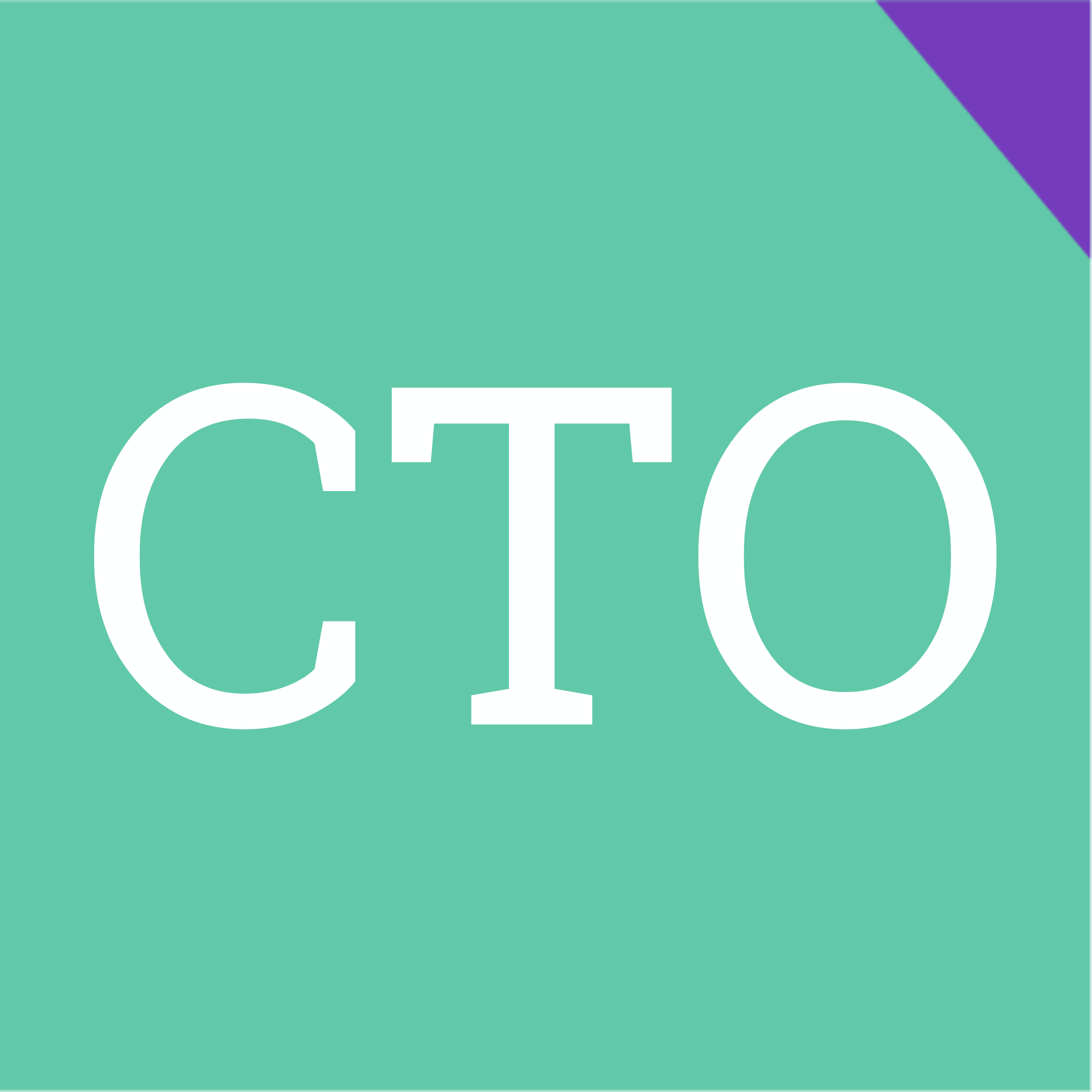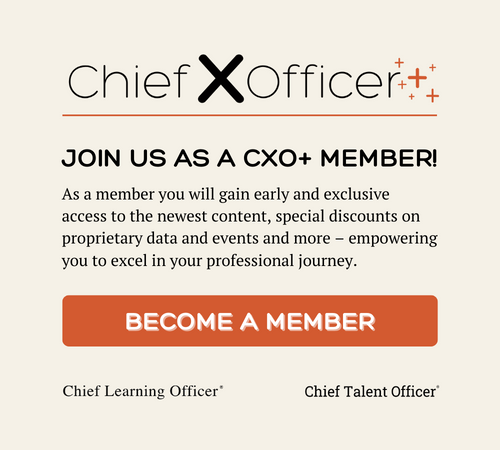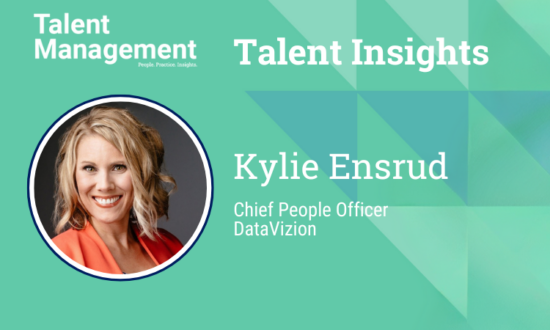As another class of graduates enters the labor market, talent leaders can utilize AI technology throughout the hiring process to close skills gaps and retain the next generation of young talent.
After a four-year shuffle of Zoom meetings and COVID-19 screenings, the class of 2023 may feel uncertain about what the “real world” has in store for them. But for the first time in more than half a century, stepping into the workforce might not be something to fear.
The class of 2023 is graduating into a unique labor market, where the unemployment rate for young workers ages 16 to 24 sits at an encouraging low and the high demand for skilled talent gives jobseekers the opportunity to leverage their abilities like never before. As technological innovation continues driving demand for new skills, employers need fresh and versatile talent to help their companies thrive in a changing workforce. Given a labor market defined by the Information Age and shifting skills demands, this class of newcomers may be just the dynamic, digital-ready candidates who talent leaders are looking for.
Bridging the gap
ManpowerGroup, a global workforce solutions company, found in its latest Employment Outlook Survey that 75 percent of employers can’t find the talent they need. Considering this talent shortage, Dave Tarner, candidate marketing director for Manpower and Experis, recommends jobseekers take initiative in marketing themselves to hiring managers. While young applicants can certainly take advantage of the tight labor market, Tarner provides a caveat: “The roles our clients are looking to fill really often require a specific skill set.”
ManpowerGroup’s survey finds digital roles comprise the largest global demand, with information technology posting the “brightest” employment outlook of any industry. Likewise, the company’s 2023 Global Talent Shortage report lists IT and data as the first of five technical skill sets talent leaders are seeking.
To attract high performers in such a tight market, Tarner says employers need to “really understand the preferences” of their desired candidates and implement the necessary changes to ensure they’re checking prospective employees’ boxes. Given the dominance of remote and hybrid work models, for instance, companies can curry favor with top talent by demonstrating a flexible approach to working from home.
Where soft skills are concerned, Tarner says “reliability and self-discipline” are paramount for many talent leaders. While formal degrees and credentials are certainly a green flag, Tarner emphasizes how these qualities (and other strengths of character) are an important testament to candidates’ abilities to self-motivate and market themselves as the best possible hire.
“In the past, employers would say, ‘Well, this is an engineering job, I need you to have an engineering degree,’” says Tarner. “What we’re seeing now is much more flexibility in how skills are attained.” Given the near-constant changeover in technical skills knowledge, talent leaders need learning-ready employees who can keep up with the rapidly changing workforce.
In fact, many employers are opting to upskill internal candidates, Tarner says. While upskilling opportunities may not be “a short-term fix,” Tarner predicts developing internal talent will be a “smart long-term plan” for talent leaders.
AI is changing the game
Another defining characteristic of the 2023 labor market belongs to the rising prevalence of AI technology. According to Will Rose, chief technology officer at Talent Select AI, various forms of AI technology have found their way into nearly every step of the hiring process.
This new technology can help recruitment teams expedite and enhance their hiring practices by trimming tedious and mundane steps from the process. For instance, many companies can now utilize software that reviews resumes for basic job qualifications, accomplishing in seconds what would otherwise have taken considerable time and labor resources.
Experts say AI technology can also be a boon to the recruitment and talent sourcing process.
“One of the things a lot of recruiters notice is candidates expressing dissatisfaction with the hiring process,” Rose says. “Why does it take so long? Why are there so many interview steps?” One of the major goals for Rose and his team is to condense the hiring process and create a more positive, expedited experience for candidates.
The company, which started as a digital interviewing service, uses AI technology to produce psychometric assessments through candidate language processing. To do this, Talent Select AI uses footage from candidate interviews to produce psychometric analyses and insights that reveal “personality traits and other skills and competencies that are relevant to the workplace,” Rose says.
Banishing bias
The expansion of AI-assisted hiring processes may also become a tool for unbiased hiring practices. Following the Supreme Court’s watershed ruling on affirmative action, the introduction of automated and objective candidate assessments can add an extra safeguard against unconscious bias in the talent acquisition cycle.
As companies strive to establish diverse and equitable hiring practices, the ability to “establish skill benchmarks for top performers” and facilitate “a data-driven recruitment process that also reduces time to hire” will make AI hiring technology an indispensable resource, explains Ben Porr, global vice president of people science at talent assessment company Harver, in a conversation with Forbes.
Rose and his team at Talent Select AI have programmed their product to evaluate interview transcripts on the actual language candidates are using and nothing more. Cognizant of how different accents and backgrounds can influence unrelated aspects of a person’s speech such as cadence or pronunciation, the Talent Select team makes a concerted effort to eliminate any extraneous variables that may skew the assessment process.
Likewise, by sourcing certain personality and competency metrics directly from candidate interviews, language processing models like this one can provide more accurate insights. When completing self-assessments, candidates often default on the natural tendency to exaggerate their desirable qualities and provide the types of answers they think will appeal to employers. “Many people, myself included, don’t quite answer things honestly,” Rose says. “That’s just human nature.”
To this effect, companies can gather more reliable data on their candidates and increase the probability of making well-informed hiring decisions, Rose says.
“The fact is, making a hiring selection has built-in biases,” Rose says. “People are people.” Combined with the seasoned discretion of HR and talent leaders, these tools can help organizations meet growing demands for diversity in the workplace. According to Josh Bersin’s “HR Predictions for 2023” report, diversity — alongside scarcity and longevity — will be one of three major workforce trends holding sway over the economy this year.
As the workforce embraces a growing population of women (who comprise nearly 60 percent of the workforce) and members of the BIPOC community, it becomes increasingly imperative that companies “understand the business need for diversity,” the report says. By fostering diversity, talent leaders can boost team performances, attract more high-skilled workers and better understand “global consumer needs.”
In 2023, eight in 10 firms plan on investing in the use of machine learning algorithms to assume control of decisions and procedures once run by human teams. While recent success with AI integration has been an exciting development for many businesses, the technology comes with a crucial caveat: even artificial intelligence is fallible.
Consider Amazon: When the company introduced an AI model into its hiring process, Amazon’s research team quickly found that the machine was exhibiting a marked bias against female applicants. For this reason, Rose advises any companies utilizing any sort of AI to ensure that their software is completely unbiased.
Rose says companies should monitor machine learning models with routine audits. “It’s actually not difficult to audit a system to see if it’s producing biased results,” Rose says. Talent Select AI also conducts audits for other companies in need.
With the right supervision, tools such as Talent Select AI’s can help employers proactively source talent and “provide an opportunity for organizations to really identify, ‘OK, what are the traits we want?’” Rose says.
Planting the seeds for long-term success
The rising prevalence of AI technology comes with good news for candidates and talent leaders alike. When sourcing qualified applicants starts to feel like scouring a “Where’s Waldo?” spread, employers can count on language processing models like Rose’s to filter application materials and recognize which candidates are a suitable match. And with generative-AI engines like ChatGPT providing accessible and user-friendly tools, jobseekers can distinguish themselves from the talent pool and meet the escalating demand for digital readiness.
The 2023 Josh Bersin report concluded that organizational success will depend on young workers to balance the needs of an aging workforce. “Remember that age is one of the most subtle dimensions of diversity,” it reports. By creating a pathway for recent graduates, talent managers can create opportunities for reverse mentoring and invest in their companies’ long-term success.
In the meantime, Rose is confident that machine learning models won’t supplant the need for human intuition. Though it seems counterintuitive, these machines “actually improve the human interaction component,” giving recruiters and talent leaders the time and bandwidth to build relationships with candidates, Rose says.
A class defined by resilience
Historically, young workers are subject to greater levels of unemployment and underemployment. This group, spanning ages 16-24, has an unemployment rate nearly 3 times larger than that of workers 25 and up.
The class of 2023 has seen its fair share of pandemic-related setbacks. Not only have they spent much of their college education online, but they’ve also experienced “disproportionate job loss” in the post-COVID-19 economy, according to the Economic Policy Institute. Many college students rely on internships and part-time employment opportunities to boost their resumes, develop career-oriented skill sets or simply support themselves. During the pandemic, these coveted positions were among the first to disappear.
“We finish college now with a diploma in hand, but lacking the real-world experience and credentials for which employers look,” graduate Nathan Biller told the Wall Street Journal.
Some talent leaders worry that this year’s graduates lack the work ethic and communication skills to thrive in the workplace, but with the proper vetting, these young workers can pay huge dividends through digital prowess and a determined mindset.
If any one word can distinguish 2023 graduates from the rest of the talent pool, it’s resilience. As the Economic Policy Institute confirmed in a report from early May, the labor market for young workers has returned to pre-pandemic standing, marking one of the quickest recoveries in recent history. Already, nearly 50 percent of young workers have stable, full-time positions — a 1.2 percent increase from 2019.











